A book
is a doorway
from this world
to another.
How strange
to close the pages
and find myself
here.
Happy Day 12 of National Poetry Month.
See you tomorrow,
Liz
A book
is a doorway
from this world
to another.
How strange
to close the pages
and find myself
here.
Happy Day 12 of National Poetry Month.
See you tomorrow,
Liz
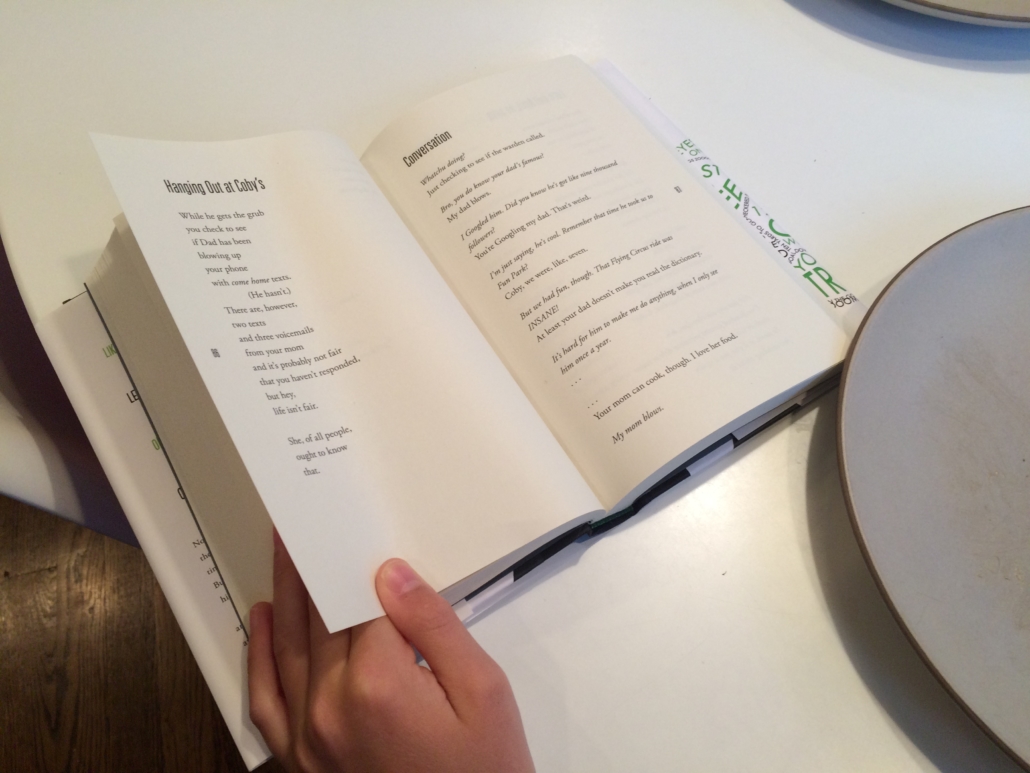
Booked Review
I love soccer.
It’s what I do
every day
after school.
I juggle.
I dribble.
I shoot on goal.
I was made for this—
body and soul.
My mom calls me in.
It’s time to read.
I say no way.
Books aren’t for me.
She shows me the cover,
says it’s brand new–
about a boy who loves soccer
just like you.
I make a face,
so she starts to read.
Hey, this kid is
a lot like me.
He loves soccer.
He doesn’t like words.
He likes to daydream.
He gets in trouble.
This book is funny.
I start to grin.
I try a new word.
(Lu-di-crous.)
I try it again.
Mom stops reading,
It’s time to cook.
Do I want to help?
I can’t.
I’m Booked!
I changed a few details, but this is pretty much what happened. My youngest was a little resistant. I gently forged ahead, and when I left the room, he kept reading. That’s when you know you’ve put the right book in the right hands. A huge thank you to Kwame Alexander for writing the right book for some picky fingers.
Happy Day 11.
See you tomorrow,
Liz
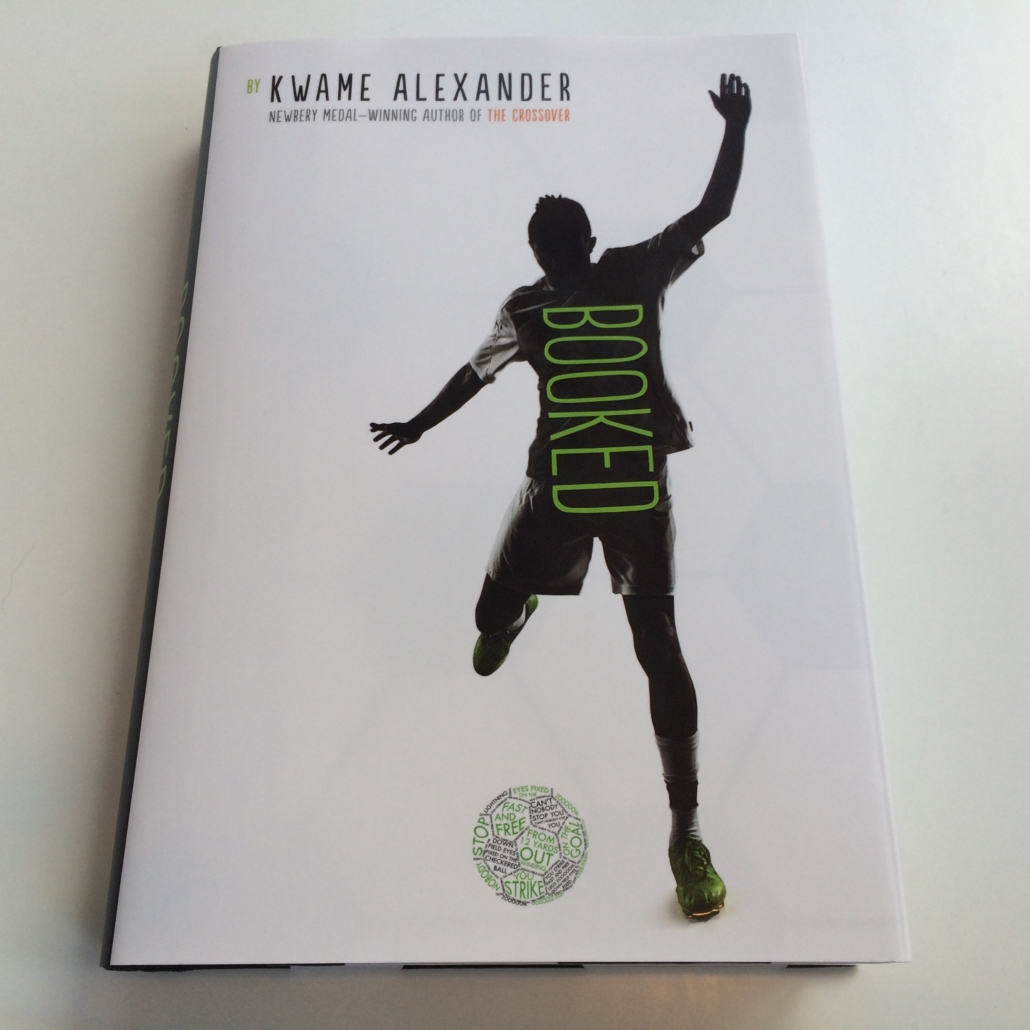
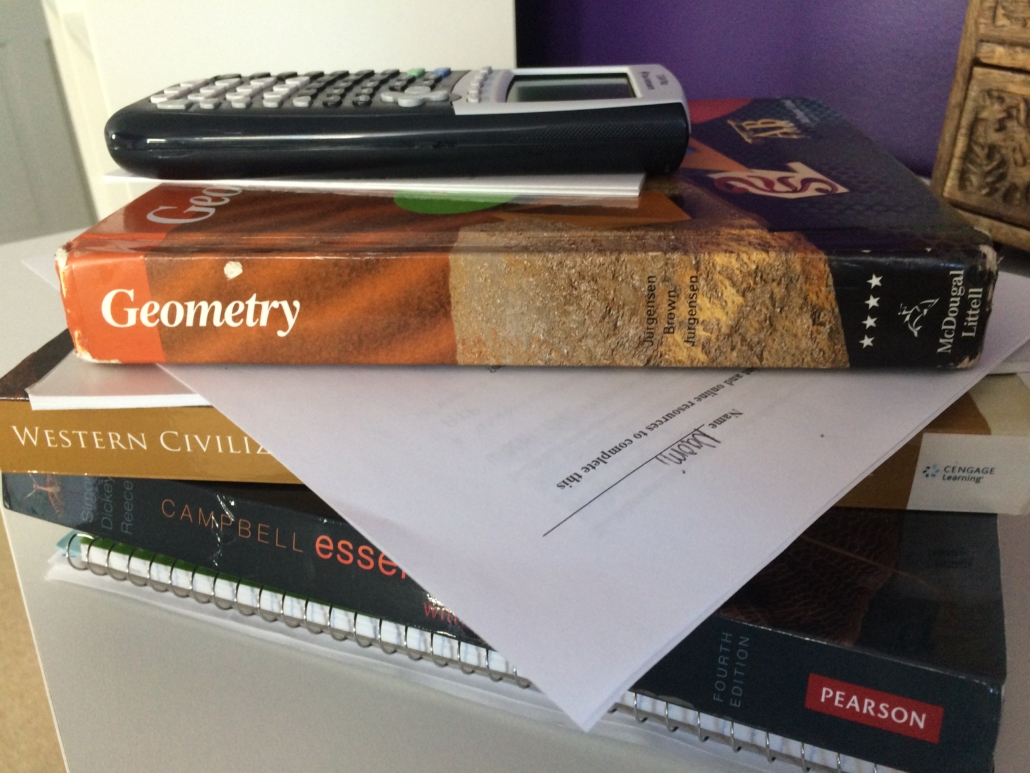
Class Participation
When you call my name
and ask for an answer,
and everyone’s eyes turn to me,
I feel like a mouse
in a freshly mown field
too far from my burrow to flee.
This morning I followed a Pragmatic Mom tweet to an article in New York Magazine about teaching introverted kids and class participation. It got me thinking and remembering.
Happy Sunday!
Liz

Instructions for a Moss
Find a wall.
Send tendrils
into mortar.
Suck moisture
from the air.
Turn light
into life.
Tip-toe
your plush
greens
over stones
so slowly
no one notices
you’ve taken
the wall.
Happy Saturday.
Liz
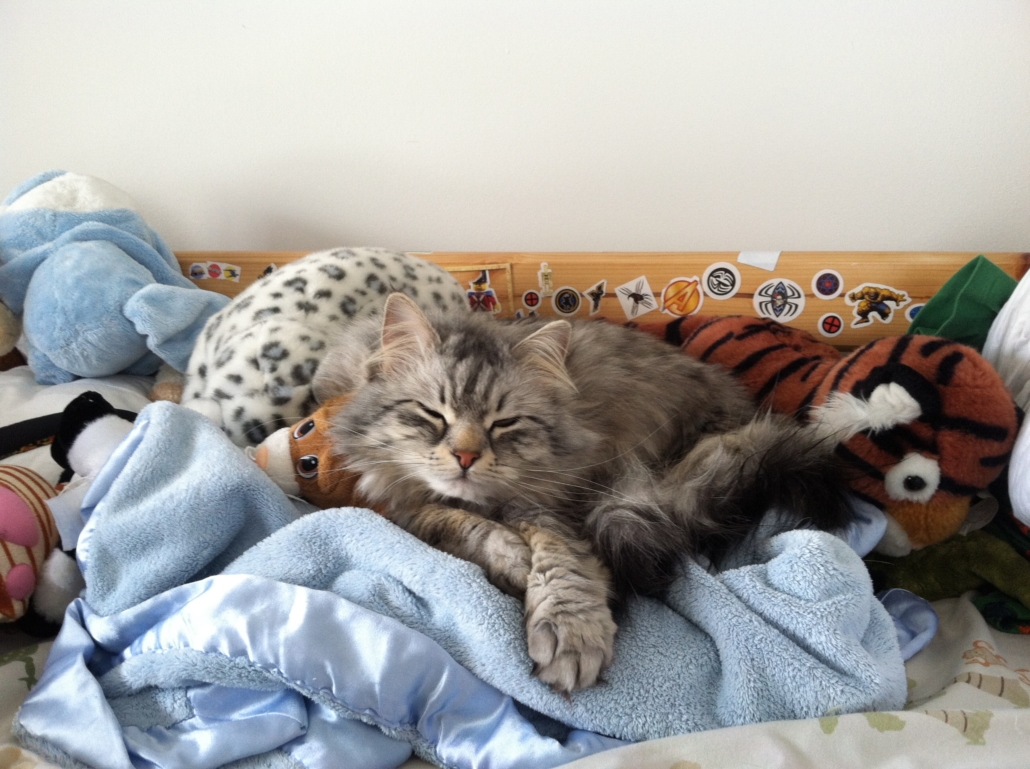
Blessing for a Cat
Bless this cat who spends her days
perfecting the art of taking a nap
with little concern for her human’s ways.
Bless this cat who spends her days
watching the windows for menacing strays
before curling up in the warmth of a lap.
Bless this cat who spends her days
perfecting the art of taking a nap.
Last Friday Fats at Gathering Books shared the poem, “Blessing on the Curl of Cat,” from Joyce Sidman’s lovely book What the Heart Knows: Chants, Charms, and Blessings. The poem expresses a human’s wish to be more like a cat. The poem is absolutely wonderful and deeply meaningful, but I confess it wasn’t quite what I was expecting given the title of the post–Cat Blessing.
Meanwhile at her blog, Live Your Poem, Irene Latham posted her beautiful poem, “Triolet for Planting Day.” The repetition of the triolet form worked perfectly for her meditation on planting, echoing the repetitive nature of the work and giving the poem a calm, spiritual tone, like that of a blessing.
With these two posts in mind, I set about writing a blessing for a cat in the form of a triolet.
For more poetic inspiration, visit Laura Purdie Salas at Writing the World for Kids.
Happy National Poetry Month!
Liz
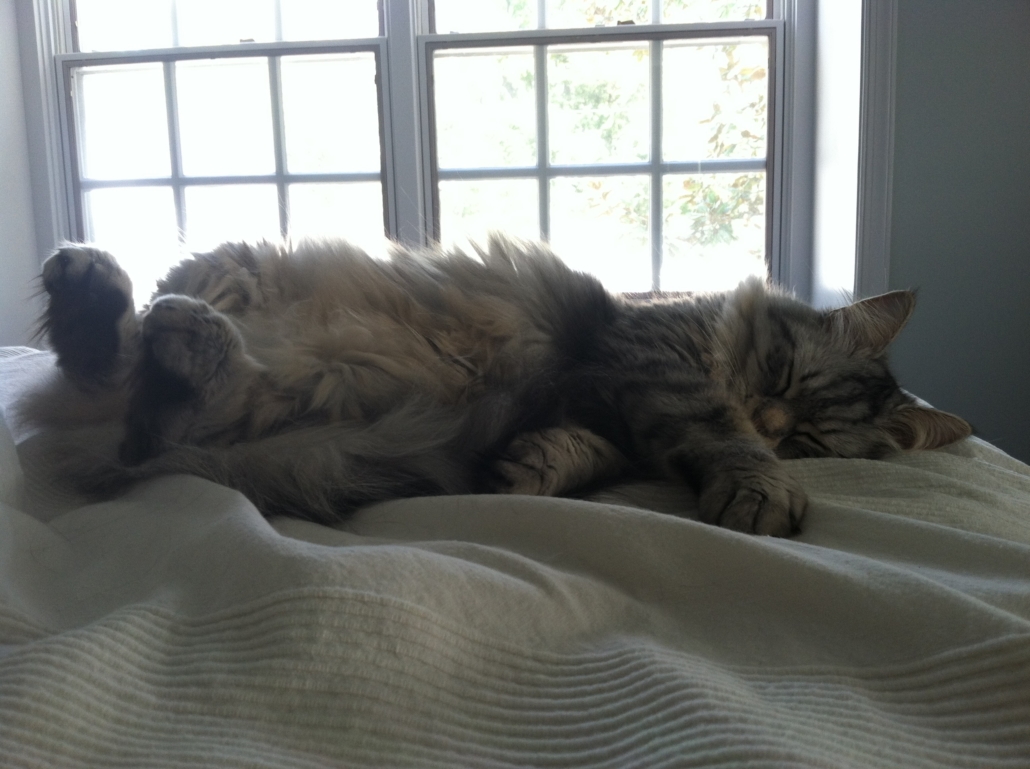
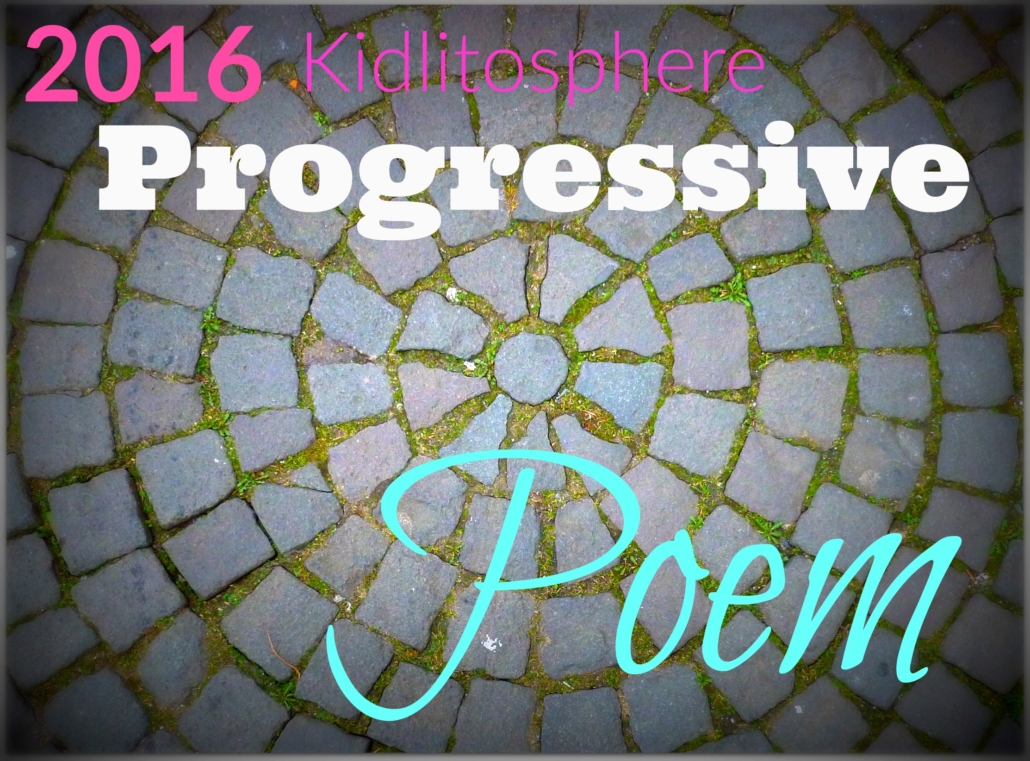
A squall of hawk wings stirs the sky
A hummingbird holds and then hies
If I could fly, I’d choose to be
Sailing through a forest of poet-trees
A cast of crabs engraves the sand
Delighting a child’s outstretched hand
If I could breathe under the sea
I am very happy to be participating in this year’s Progressive, and collective, Poem, started and each year renewed by Irene Latham. This year Laura kicked it off with a beautiful opening line, which Joy, Doraine, Diane, Penny, and Carol have all built on beautifully.
When I sat down to write I felt I had an interesting decision about whether to echo the structure of the first stanza. I decided that I would because I was intrigued by the “I” and wanted to bring that voice back into the poem. I considered following the third line more closely with something like “If I could dig, I’d choose,” or “If I could creep, I’d choose,” but those actions didn’t seem as much of a stretch as flying. I also wasn’t sure I wanted to take the poem under the sand, so instead I took us into the ocean. I can’t wait to see where Janet takes us next.
All the best,
Liz
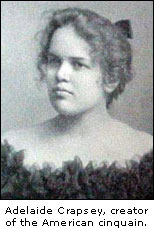
A Cinquain for Adelaide Crapsey
She wrote
of moons, white moths,
cold winds and silences,
counting down the few syllables
she had.
This is what happens when you wander–from crocuses, to tulips, to cinquains, to Adelaide Crapsey. As I mentioned yesterday, Adelaide Crapsey invented the cinquain. The more I learn about her, the more compelling I find her. When I realized I wanted to write about her, it seemed only right to use her form. Crapsey was a poet, scholar, and teacher who died at 36, after living for three years with tuberculosis and knowing it would ultimately kill her. At one point she convalesced in a sanatorium where her window overlooked a cemetery. I wonder if living with an awareness of her limited days gave her insight into the ways that limits push us. Is this what inspired her to invent a form with its own challenging, and hopefully inspiring, limits?
Tomorrow I’ll be adding to this year’s Progressive Poem. See you then.
Liz

Tulips
greet the spring sky
with a coat of fresh red
lipstick and fits of welcoming
kisses.
I’m still wandering around the garden, as you can see. When I first started composing this poem, it naturally took the form of a cinquain, so I kept going with that. A cinquain is a five line poem with two syllables in the first line, four in the second, six in the third, eight in the fourth, and then two again in the fifth and last line. It was invented, and in my opinion perfected, by Adelaide Crapsey who wanted to create an English language form comparable to the haiku. I’m very glad I took a few pictures of the tulips yesterday before last night’s surprise freeze.
See you tomorrow.
Liz

Suddenly a crocus
Pops out of the ground,
Rushing purple and yellow
Into a world gone brown.
Neighbors passing by can’t help but
Grin.
I admire Avis Harley’s acrostics. I think they work especially well when the word or phrase being spelled out doesn’t appear in the poem. I tried to make the letters purple, but alas they insist on being blue.
Have I mentioned I love spring?
Happy Day 4! See you tomorrow.
Liz
unwinding the apple
in one long strand
I have been writing haiku for a few years now, and over that time I’ve become increasingly interested in renku, a linked form composed by multiple writers. As writers often work alone, I find the idea of writing together very appealing. I am also intrigued by the guidelines renku leaders follow around themes and when they should appear and the intuitive ways the verses link to one another.
At the end of his essay “A Personal Introduction to Renku,” William J Higginson writes, “Enjoy a renku as you would enjoy music, for the varying motifs which come and go, threaded through the rhythms of first one voice, then another. Catch, if you can, how one verse adds meaning to what went before, and then changes its own meaning as the next follows. These changes, lightly governed by a variety of guidelines, should appear as simply the continuing flux of life.”
Isn’t this lovely? And oddly non-narrative?
I first learned about renku through “Thunder Moon: A Renku Party,” an episode of the Haiku Chronicles podcast. I had been wondering how to find one to participate in, when I discovered that The Haiku Foundation had just started one on their blog Troutswirl. The leader Marshall Hryciuk, who has led 40 renku sessions, opened with a three line hokku.
In the comments section below, writers offered possible verses to follow. Marshall replied to each with his thoughts about why or why not it would make sense as the next verse. He then selected one and suggested guidelines for the next verse. The renku currently has three verses and writers are suggesting possible fourths with the caveats that the next verse should be two lines, the season should be autumn, perhaps indoors, and should not refer to moonlight, animals, flowers, or precipitation!
These are just the kind of limits that inspire creativity, right?!
Though a novice, I bravely wandered in, proposing the following:
unwinding the apple
in one long strand
Marshall kindly and generously suggested the verse might be better as:
unwinding the orange
in one long peel
I have to admit I agree that his suggestion has more power, I think because orange is a stronger color and all oranges are orange and apples can be many different colors. He also guessed that perhaps I had gone with apple because it was more autumnal and encouraged me to follow my instinct.
Perhaps it wasn’t the most successful verse as a verse, but it was my first baby step in learning about a fascinating practice, and it was fun.
Happy Sunday and Day 3 of National Poetry Month!
Liz